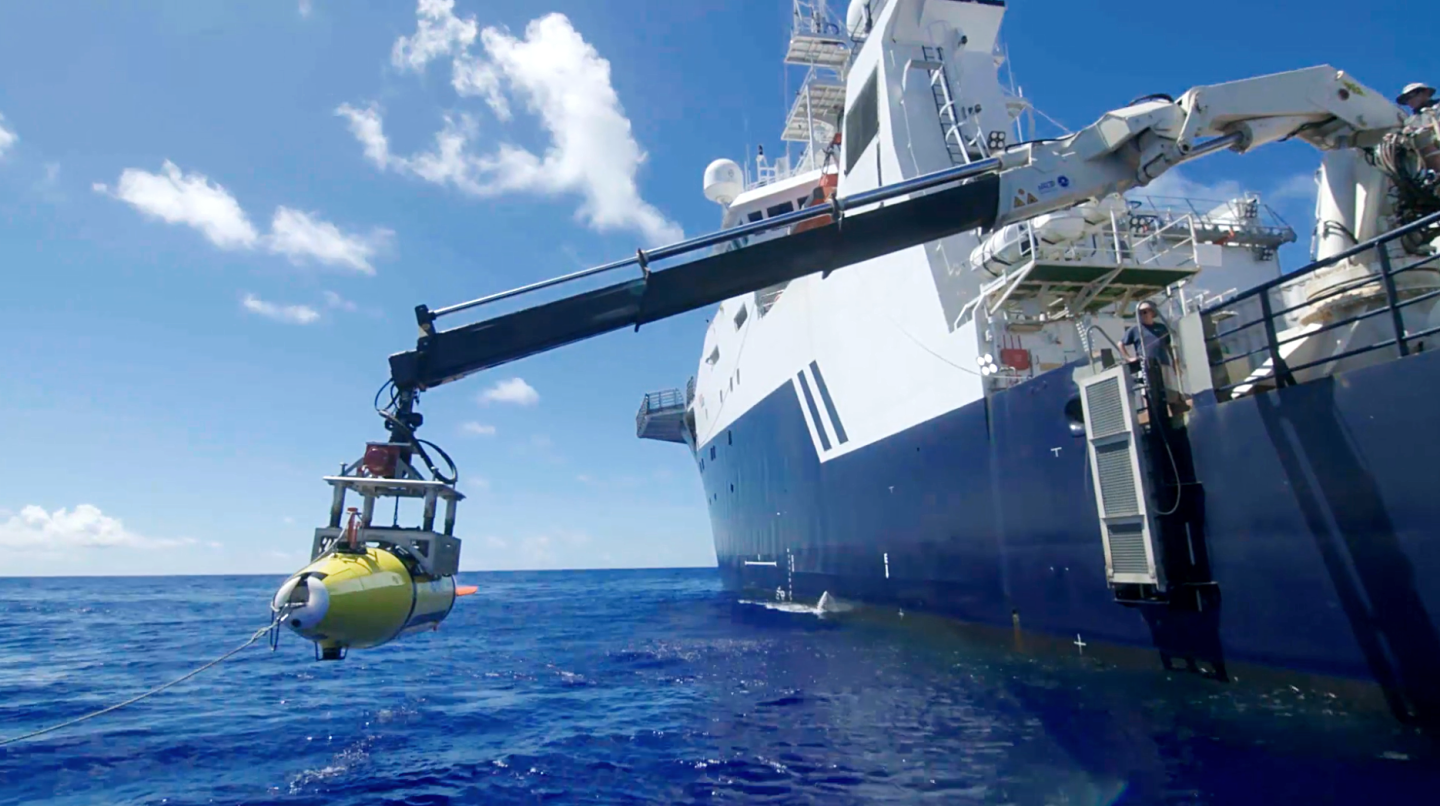The sea has given up another one its mysteries, as billionaire and Microsoft co-founder Paul G. Allen's Research Vessel (R/V) Petrel recently discovered the resting place of the USS Indianapolis after its loss 72 years ago from a Japanese submarine attack. Using Autonomous Underwater Vehicles (AUVs) and state-of-the-art sonar, the wreckage of the US Navy warship that delivered the first operational atomic bomb was found on August 18 lying 18,000 ft (5,500 m) below the surface in the North Pacific somewhere between Guam and the Philippines.
Launched in 1931, the USS Indianapolis was one of the few warships of the US Pacific Fleet to escape destruction during the Battle of Pearl Harbor, thanks to being at sea on a training exercise on the morning of December 7, 1941. Spending most of the war fighting in the Northern and Central Pacific theaters as the flagship of the Fifth Fleet, the 9,800-ton Portland Class heavy cruiser entered the history books in July 1945 as she made a top secret high-speed run from San Francisco to Tinian Island in the Pacific, carrying the enriched uranium and components for the "Little Boy" atomic bomb that was dropped on Hiroshima on August 6, 1945.
Tragically, after arriving at Tinian on July 26, the Indianapolis entered the history books again on July 30 while steaming for Leyte in the Philippines. In the early hours of the morning, the Imperial Japanese Navy submarine I-58 under the command of Mochitsura Hashimoto sighted the cruiser and launched two Type 95 torpedoes. Within 12 minutes, the Indianapolis capsized and then sank, sending the 800 survivors of her crew of 1,196 sailors and Marines into the sea.

The sinking occurred so fast that a distress signal couldn't be sent, nor could the life saving equipment be properly deployed. As a result, the US Navy was unaware of her loss and it wasn't until days later that a passing aircraft spotted the survivors and up to five days before the last of the 316 men left alive were rescued. The rest succumbed to exposure, lack of water, and the worst mass shark attack in recorded history. To this day, the sinking of the Indianapolis is the greatest sea disaster in US Navy history.
Over the seven decades since the sinking, there have been many attempts to locate the resting place of the Indianapolis, but none have been successful until now. Using the recently acquired and retrofitted 250-ft (76-m) R/V Petrel with its suite of subsea equipment capable of diving to 19,700 ft (6,000 m), the searchers used new information on the incident uncovered in 2016 by Dr. Richard Hulver, historian with the Naval History and Heritage Command. This indicated that the Indianapolis lay west of where it was previously believed to be.
The Petrel and her 16-person expedition team surveyed an area of 600 mi² (1,500 km²) of ocean using a Hydroid REMUS 6000 AUV, that is capable of searching an area on its own for up to 20 hrs using deep-water side scan sonar. When an anomaly was found that might be a sunken ship, a more detailed search was made using a BXL 79 remote-operated vehicle equipped with high-definition video cameras, LED lights, sonars, and underwater positioning and navigation systems.

According to Allen, the Petrel is still on station carrying out surveys as weather permits, and will arrange a live tour of the wreck in a few weeks. However, because the Indianapolis is an official war grave and the property of the US Navy, its location will not be divulged.
"To be able to honor the brave men of the USS Indianapolis and their families through the discovery of a ship that played such a significant role during World War II is truly humbling," says Allen. "As Americans, we all owe a debt of gratitude to the crew for their courage, persistence and sacrifice in the face of horrendous circumstances. While our search for the rest of the wreckage will continue, I hope everyone connected to this historic ship will feel some measure of closure at this discovery so long in coming."
Source: Paul Allen



















